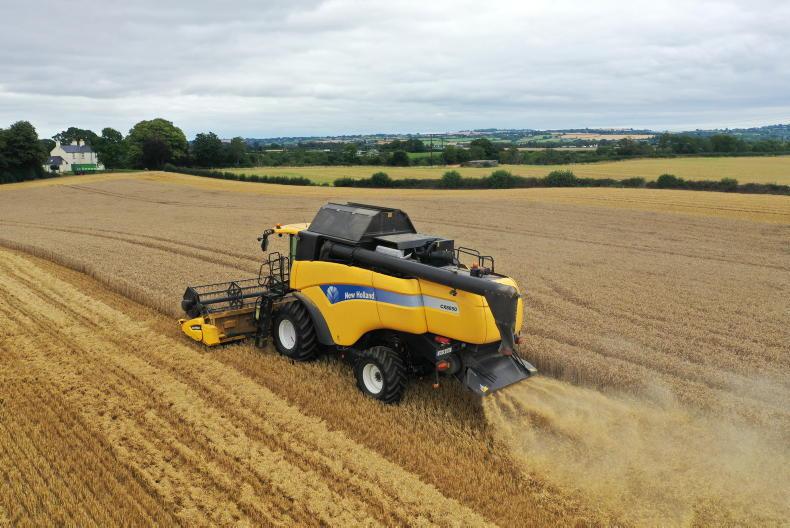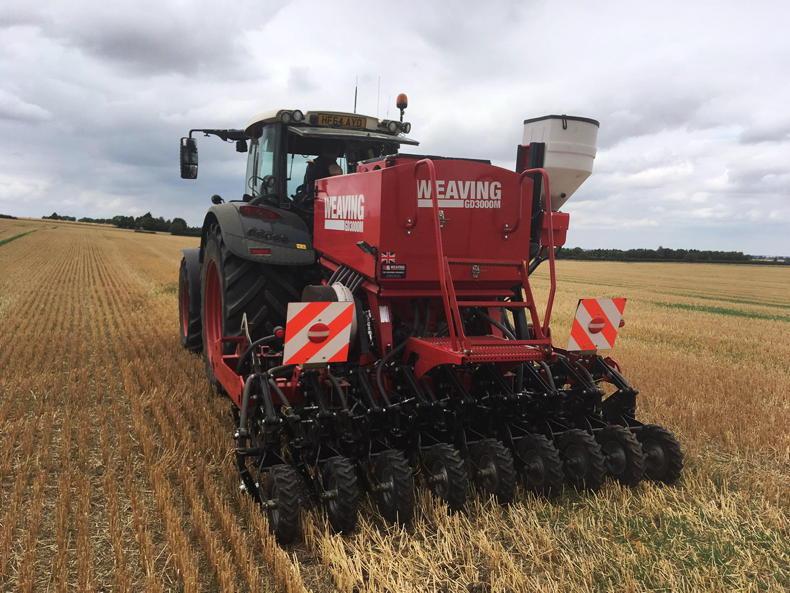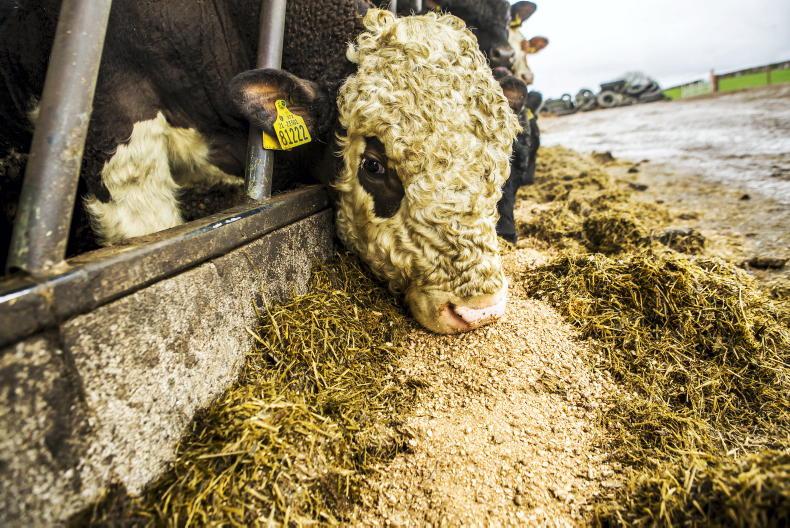When the Scottish Government set out net-zero greenhouse gas emissions by 2045 in 2009, it was hailed as ambitious.
But as these aspirations filter down to targets and requirements for farming, just how ambitious the plans are comes into sharp relief.
“There is a lot of pressure to get to net-zero and nowhere more so than in farming,” according to Dr Jagadeesh Yeluripati, senior scientist on ecosystem modelling at the James Hutton Institute.
“There is a lot of progress being made in transport and energy to reduce their emissions.
“But progress has been slow in agriculture, so I can see the focus being there for the next few years.”
Yeluripati is a leading scientist on modelling how Scottish agriculture can reduce emissions and published influential papers on how the Government should set policies to achieve their ambition.
Currently pasture and arable farming accounts for 10% of Scotland’s emissions. This means that agriculture will need to play its part if national targets are to be met.

Incorporating straw back into the field is one way to build carbon stocks.
One of the popular options is for agriculture to offset its emissions through carbon sequestration which could lead to some farming systems being carbon-positive.
The fundamental way is by building up carbon within the soil, which has often been depleted by changing grassland to cropland, releasing soil carbon on Scottish agricultural land.
Increasing the organic content in soils could restore carbon to the soils alongside new management practices. However, carbon sequestration potential will be high where soils have been depleted.
By area, most of Scotland’s farmland is rough grazing or permanent pasture, which has far less scope to build up carbon stocks significantly further.
Furthermore, this is an avenue that could reduce output on the land as it builds carbon, which means that farmers would need to be paid or compelled to change practice.
Cropland which has cover crops and has organic manure or compost applied could increase carbon in the soil between 1t/ha to 1.5t/ha under best management practices.

Liming marginal ground could increase carbon in the soil but more research is required.
This would apply to land already degraded in carbon and is not as applicable to mixed farmland run as part of a rotation with grassland and regularly applying muck.
Scientists do believe that emissions from livestock cannot be compensated for by soil carbon sequestration alone. Most livestock systems will need to focus on reducing their emissions and offsetting them through other land uses, feed additives and a combination of management and land-use strategies.
Mitigation options for
livestock farming
Alternatively, feed additives could reduce the amount of emissions per animal and therefore require less offsetting. Reducing methane emissions associated with ruminants by using feed additives including 3NOP, nitrates, probiotics, high dietary fat sources and seaweed derivatives could significantly contribute.

No-till systems have been shown to have less benefit to carbon in the soil than previously thought.
Apart from this, pasture-fed livestock, agroforestry, organic farming and, to a lesser extent, conservation agriculture, could provide the opportunity to generate substantial reductions in GHG emissions.
However, having fewer animals and simply importing more product from abroad is not a sensible solution. What is needed, according to the scientist, is for consumers to change their buying behaviour. They believe meat and dairy consumption should fall by the middle of the coming century.
Carbon sequestering
in the hills
Increasing lime application in marginal ground has also been proposed to increase the amount of carbon in those soils. The idea is that the higher pH allows the plants to grow more vigorously and build up increased plant material which can be stored in the soil.
While some studies do show the impact of liming on carbon sequestration and greenhouse gas emissions, the picture is complex and there are major evidence gaps in understanding the liming impact.
Recent scientific reports stop short of recommending its application until further research has been complete.
The picture is also unclear with no-tillage systems after recent research shows the potential to accumulate carbon under no-till or reduced tillage being limited compared to conventional ploughing.
A recent study found no advantage to carbon sequestration with the use of no-till or reduced tillage compared to conventional ploughing, which has been backed up by studies in other countries such as Finland.
The challenge facing the sector has not been seen since the drive for food production during and after World War II. However, the land has to feed the nation and reduce greenhouse gases in the atmosphere to hit the Government’s promise by 2045.
According to leading scientists such as Yeluripati, the pressure is on for changes, and farming will look very different in the future.
When the Scottish Government set out net-zero greenhouse gas emissions by 2045 in 2009, it was hailed as ambitious.
But as these aspirations filter down to targets and requirements for farming, just how ambitious the plans are comes into sharp relief.
“There is a lot of pressure to get to net-zero and nowhere more so than in farming,” according to Dr Jagadeesh Yeluripati, senior scientist on ecosystem modelling at the James Hutton Institute.
“There is a lot of progress being made in transport and energy to reduce their emissions.
“But progress has been slow in agriculture, so I can see the focus being there for the next few years.”
Yeluripati is a leading scientist on modelling how Scottish agriculture can reduce emissions and published influential papers on how the Government should set policies to achieve their ambition.
Currently pasture and arable farming accounts for 10% of Scotland’s emissions. This means that agriculture will need to play its part if national targets are to be met.

Incorporating straw back into the field is one way to build carbon stocks.
One of the popular options is for agriculture to offset its emissions through carbon sequestration which could lead to some farming systems being carbon-positive.
The fundamental way is by building up carbon within the soil, which has often been depleted by changing grassland to cropland, releasing soil carbon on Scottish agricultural land.
Increasing the organic content in soils could restore carbon to the soils alongside new management practices. However, carbon sequestration potential will be high where soils have been depleted.
By area, most of Scotland’s farmland is rough grazing or permanent pasture, which has far less scope to build up carbon stocks significantly further.
Furthermore, this is an avenue that could reduce output on the land as it builds carbon, which means that farmers would need to be paid or compelled to change practice.
Cropland which has cover crops and has organic manure or compost applied could increase carbon in the soil between 1t/ha to 1.5t/ha under best management practices.

Liming marginal ground could increase carbon in the soil but more research is required.
This would apply to land already degraded in carbon and is not as applicable to mixed farmland run as part of a rotation with grassland and regularly applying muck.
Scientists do believe that emissions from livestock cannot be compensated for by soil carbon sequestration alone. Most livestock systems will need to focus on reducing their emissions and offsetting them through other land uses, feed additives and a combination of management and land-use strategies.
Mitigation options for
livestock farming
Alternatively, feed additives could reduce the amount of emissions per animal and therefore require less offsetting. Reducing methane emissions associated with ruminants by using feed additives including 3NOP, nitrates, probiotics, high dietary fat sources and seaweed derivatives could significantly contribute.

No-till systems have been shown to have less benefit to carbon in the soil than previously thought.
Apart from this, pasture-fed livestock, agroforestry, organic farming and, to a lesser extent, conservation agriculture, could provide the opportunity to generate substantial reductions in GHG emissions.
However, having fewer animals and simply importing more product from abroad is not a sensible solution. What is needed, according to the scientist, is for consumers to change their buying behaviour. They believe meat and dairy consumption should fall by the middle of the coming century.
Carbon sequestering
in the hills
Increasing lime application in marginal ground has also been proposed to increase the amount of carbon in those soils. The idea is that the higher pH allows the plants to grow more vigorously and build up increased plant material which can be stored in the soil.
While some studies do show the impact of liming on carbon sequestration and greenhouse gas emissions, the picture is complex and there are major evidence gaps in understanding the liming impact.
Recent scientific reports stop short of recommending its application until further research has been complete.
The picture is also unclear with no-tillage systems after recent research shows the potential to accumulate carbon under no-till or reduced tillage being limited compared to conventional ploughing.
A recent study found no advantage to carbon sequestration with the use of no-till or reduced tillage compared to conventional ploughing, which has been backed up by studies in other countries such as Finland.
The challenge facing the sector has not been seen since the drive for food production during and after World War II. However, the land has to feed the nation and reduce greenhouse gases in the atmosphere to hit the Government’s promise by 2045.
According to leading scientists such as Yeluripati, the pressure is on for changes, and farming will look very different in the future.









 This is a subscriber-only article
This is a subscriber-only article











SHARING OPTIONS: